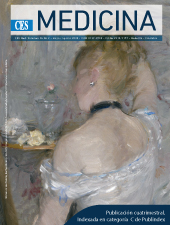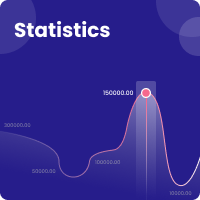Sickle trait and splenic infarction, a non-foreign entity in Antioquia population
DOI:
https://doi.org/10.21615/cesmedicina.34.2.5Keywords:
Sickle cell trait, Hemoglobin SC Disease, Splenic infarct, HypoxiaAbstract
Generally, patients with sickle cell trait have few manifestations of the sickle cell spectrum. Splenic infarction is rare, but is a documented complication of sickle cell trait and usually occurs under conditions of decreased partial pressure of oxygen, such as at high altitudes. We present the case of a young man with no previous history who presented sudden pain in the left hypochondrium after traveling to a high-altitude area. Splenic infarction was documented and sickle cell trait was later confirmed with hemoglobin electrophoresis as the etiology of the condition. Most patients remain ignorant of their sickle cell trait, which makes their approach challenging, delays diagnosis, and results in inappropriate management that may increase the extent of splenic infarction and eventually require splenectomy.
Downloads
References
Naik RP, Smith-Whitley K, Hassell KL, Umeh NI, Montalembert MD, Sahota P, et al. Clinical outcomes associated with sickle cell trait: A systematic review. Ann Intern Med. 2018;169(9):619-27.
Kumar R, Kapoor R, Singh J, Das S, Sharma A, Yanamandra U, et al. Splenic Infarct on Exposure to Extreme High Altitude in Individuals with Sickle Trait: A Single-Center Experience. High Alt Med Biol. 2019;20(3):215-20.
Arora M, Bhatia J, Khanna V, Jaiswal P, Charan V. Splenic Syndrome due to Sickle Cell Trait amongst Indian Soldiers Serving in Kashmir. Med J Armed Forces India. 2008;64(2):123-6.
Xu JZ, Thein SL. The carrier state for sickle cell disease is not completely harmless. Haematologica. 2019;104(6):1106-11.
Tsaras G, Owusu-Ansah A, Boateng FO, Amoateng-Adjepong Y. Complications associated with sickle cell trait: a brief narrative review. Am J Med. 2009;122(6):507-12.
CDC. Data & Statistics on Sickle Cell Disease | CDC [Internet]. Centers for Disease Control and Prevention. 2016. Disponible en: https://www.cdc.gov/ncbddd/sicklecell/data.html
Romero-Sánchez C, Gómez Gutiérrez A, Duarte Y, Amazo C, Manosalva C, Chila M L, et al. Hemoglobin variants in Colombian patients referred to discard hemoglobinopathies. Rev Med Chil. 2015;143(10):1260-8.
Bernal MD, Collazos A, Bonilla RD, Tascón EP. Determination of the prevalence of hemoglobin S, C, D, and G in neonates from Buenaventura, Colombia. Colomb Médica. 2010;41(2):141-147-147.
Restrepo F, Loaiza N, Arrubla M, Cossio S, Ordoñez J. Estudio de la prevalencia de anemia falciforme y otras hemoglobinopatias en población de recién nacidos del Área Metropolitana de Medellín. Memorias taller anual TSH Neonatal. 2010;237-9.
Franklin QJ, Compeggie M. Splenic syndrome in sickle cell trait: four case presentations and a review of the literature. Mil Med.1999;164(3):230-3.
Goodman J, Hassell K, Irwin D, Witkowski EH, Nuss R. The Splenic Syndrome in Individuals with Sickle Cell Trait. High Alt Med Biol. 2014;15(4):468-71.
Bunn HF. Pathogenesis and treatment of sickle cell disease. N Engl J Med. 1997;337(11):762-9.
Vekilov PG. Sickle-cell haemoglobin polymerization: is it the primary pathogenic event of sickle-cell anaemia? Br J Haematol. 2007;139(2):173-84.
Sheikha A. Splenic syndrome in patients at high altitude with unrecognized sickle cell trait: splenectomy is often unnecessary. Can J Surg J Can Chir.2005;48(5):377-81.
Norii T, Freeman TH, Alseidi A, Butler WP, Gelford BL. Pressurized flight immediately after splenic infarction in two patients with the sickle cell trait. Aviat Space Environ Med. 2011;82(1):58-60.
Cooley JC, Peterson WL, Engel CE, Jernigan JP. Clinical triad of massive splenic infarction, sicklemia trait, and high altitude flying. J Am Med Assoc. 1954;154(2):111-3.
Murano T, Fox AD, Anjaria D. Acute splenic syndrome in an African-American male with sickle cell trait on a commercial airplane flight. J Emerg Med.2013;45(5):e161-165.
Goldberg NM, Dorman JP, Riley CA, Armbruster EJ. Altitude-related specific infarction in sickle cell trait--case reports of a father and son. West J Med. 1985;143(5):670-2.
Thompson AA. Sickle cell trait testing and athletic participation: a solution in search of a problem? Hematology. 2013;2013(1):632-7.
Wand O, Tayer-Shifman OE, Khoury S, Hershko AY. A practical approach to infarction of the spleen as a rare manifestation of multiple common diseases. Ann Med. 2018;50(6):494-500.
Cook AL. Splenic infarction in a high-altitude traveler with undiagnosed sickle cell trait. Wilderness Environ Med. 2008;19(4):318-20.
López de Guimaraes D, Menacho López J, Villanueva Palacios J, Mosquera Vásquez V. [Splenic infarction at high altitude, Huaraz-Peru (3,100 masl)]. Rev Gastroenterol Peru Organo Of Soc Gastroenterol Peru. 2009;29(2):179-84.
Funakoshi H, Takada T, Miyahara M, Tsukamoto T, Noda K, Ohira Y, et al. Sickle cell trait as a cause of splenic infarction while climbing Mt. Fuji. Intern Med Tokyo Jpn. 2010;49(16):1827-9.
Pecker LH, Naik RP. The current state of sickle cell trait: implications for reproductive and genetic counseling. Blood. 2018;132(22):2331-8.
World Health Organization, Council for International Organizations of Medical Sciences. International ethical guidelines for health-related research involving humans. Geneva: CIOMS; 2017.
Downloads
Published
How to Cite
Issue
Section
License
Copyright (c) 2020 CES Medicina

This work is licensed under a Creative Commons Attribution-NonCommercial-ShareAlike 4.0 International License.
Derechos de reproducción (copyright)
Cada manuscrito se acompañará de una declaración en la que se especifique que los materiales son inéditos, que no han sido publicados anteriormente en formato impreso o electrónico y que no se presentarán a ningún otro medio antes de conocer la decisión de la revista. En todo caso, cualquier publicación anterior, sea en forma impresa o electrónica, deberá darse a conocer a la redacción por escrito.
Plagios, duplicaciones totales o parciales, traduccones del original a otro idioma son de responsabilidad exclusiva de los autores el envío.
Los autores adjuntarán una declaración firmada indicando que, si el manuscrito se acepta para su publicación, los derechos de reproducción son propiedad exclusiva de la Revista CES Medicina.
Se solicita a los autores que proporcionen la información completa acerca de cualquier beca o subvención recibida de una entidad comercial u otro grupo con intereses privados, u otro organismo, para costear parcial o totalmente el trabajo en que se basa el artículo.
Los autores tienen la responsabilidad de obtener los permisos necesarios para reproducir cualquier material protegido por derechos de reproducción. El manuscrito se acompañará de la carta original que otorgue ese permiso y en ella debe especificarse con exactitud el número del cuadro o figura o el texto exacto que se citará y cómo se usará, así como la referencia bibliográfica completa.
| Article metrics | |
|---|---|
| Abstract views | |
| Galley vies | |
| PDF Views | |
| HTML views | |
| Other views | |



